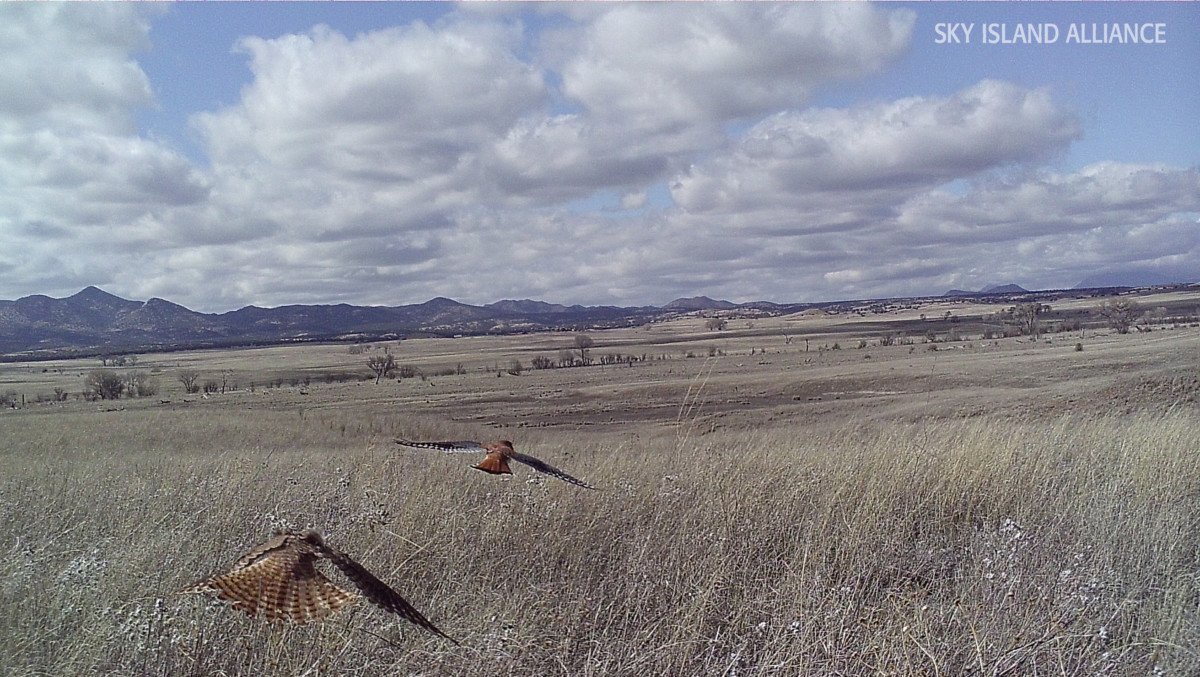
A pair of America Kestrel flies past the camera in the San Rafael Valley, Border Wildlife Study. Photo credit: Sky Island Alliance. / Un par de halconcitos colorados vuela más allá de la cámara en el valle de San Rafael, Estudio de Fauna Fronteriza. Crédito de la foto: Sky Island Alliance.
After just a few weeks, wildlife cameras in our Border Wildlife Study detected 27 different species of wildlife in these incredible borderlands. Some of those species were photographed multiple times, as is the case of the American Kestrels! So, we thought we’d share some interesting facts about these magnificent birds:
- American kestrels (Falco sparverius) are the smallest bird of prey in North America.
- They are widespread throughout the Americas, ranging from Alaska to the southern tip of South America.
- American kestrels live in the Sky Island region year–round.
- American kestrels are highly adaptable. They can be found in plains, deserts, fields, mountains, tropical lowlands and even cities.
- American kestrels are monogamous
- American kestrels usually only raise one brood in a season, however if that initial brood is unsuccessful, they can raise two.
- American kestrels have a diet that varies depending on the season of the year. For example, during the summer they prey mostly on insects, while in the winter they hunt small prey such as mice, voles, shrews, snakes, frogs, and small birds.
- American kestrels hunt during the day using three different hunting techniques: hovering, perch-hunting, and in-flight insect catching.
- Bigger raptors (like great-horned owls, red-tailed hawks, and prairie falcons) and some mammals (like bobcats, skunks, coyotes, and raccoons) have been known to prey on American kestrels. Most predation involves eggs, broods, or young birds.
- American kestrels play an important predator role within their ecosystems by controlling prey populations.
You can listen to their call and read more about them at the Cornell Lab of Ornithology

